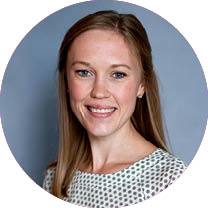At a Nov. 9 board of trustees meeting, Kara Bock, NBISD assistant superintendent for curriculum and instruction, shared data with the board that was collected by campus principals and teachers.
When calculating the rate of students failing, principals tracked all classes for middle and high school students, including elective courses, and tracked only core classes for elementary students, Bock said.
The data showed that 39.06% of remote learners across all grade levels were failing at least one class as compared to 14.45% of in-person students who were failing at least one class.
According to the report, 10% of remote elementary students were failing three or more classes, 28% of remote middle school students were failing three or more classes and 32% of remote high school students were failing three or more classes. Ahead of the Oct. 19 start of the second quarter, students were able to request to change their instruction environment, and the district announced that any remote learner who was not passing three core classes and had below 90% attendance would be required to return to campus.
More than 780 students were asked to return to campus due to class failures or attendance issues, including more than 290 high school students, according to district data.
“Principals and their teams worked very hard on identifying these kids and having conversations with the parents and the high school students on their performance,” Bock said.
However, after NBISD received approval for their plans, the Texas Education Agency announced that districts could not require students to return to campus, according to Superintendent Randy Moczygemba.
Moczygemba said that Texas Commissioner of Education Mike Morath later clarified that districts could require students to return to campus in the case of multiple class failure or attendance issues, but students would have the ability to appeal the requirement for medical reasons.
As a result of the discussions, not all students who were failing multiple classes or had attendance issues returned to campus, though 76.5% of students returned to campus for the second nine-weeks, up from 62% for the second nine-weeks.
Bock said that one of the key reasons for increased failure rates among remote learners is that some students are not engaging with the synchronous instruction or participating in virtual discussions.
“If they're not going to those synchronous times when the teachers are offering the actual instruction, and they're just trying to do it on their own, that could affect their comprehension of the materials,” Bock said. “If the kids aren’t participating, it is going to hurt them.”
Similar failure and attendance rates have been reported in surrounding counties, according to Board President Sherry Harrison.
The district plans to continue working with students and parents to ensure students are fully engaging with the material and will continue to require students not meeting district standards to return to campus or to work with administrators to develop a plan.
“When you don't come to class, you're missing out on the discussion, and you're missing out on the interaction,” Bock said. “The standards are just as high at home as they are in the classroom.”





